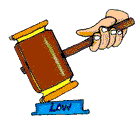In the early American Colonies children were not worth much. In 1641, the General Court of Massachusetts passed the stubborn child law, which stated that if children disobeyed their parents, their lives would have been ended. The Court based its law from the Book of Deuteronomy (21:18-21) of the Old Testament.
 Loosely stated, this law says that if a man has a stubborn or rebellious son, 16 or older, and would not obey his father, the parents could take him to court and testify against the son, and such a son’s life should end. As recently as 1842, five year olds were made to work 16 hour days in coal mines. Cruelty to animals became a punishable offense in England 60 years earlier than did cruelty to children. In 1874 New York, in order to have a child removed from being abused by her family, animal abuse charges had to be invoked.
Loosely stated, this law says that if a man has a stubborn or rebellious son, 16 or older, and would not obey his father, the parents could take him to court and testify against the son, and such a son’s life should end. As recently as 1842, five year olds were made to work 16 hour days in coal mines. Cruelty to animals became a punishable offense in England 60 years earlier than did cruelty to children. In 1874 New York, in order to have a child removed from being abused by her family, animal abuse charges had to be invoked.
Little Mary Ellen Wilson was being horribly abused and neglected by her parents, and when the founder of the American Society for the Prevention of Cruelty to Animals, Henry Berge heard of Mary Ellen’s plight, he petitioned the court to hear the case on the grounds that (1) Mary Ellen was a member of the animal Kingdome she was entitled to the same protections as abused animals, and (2) the child needed protection. The court heard the case, convicted the mother, and sentenced her to one year of hard labor, and Mary Ellen was placed into a loving home.
Thankfully times change, but there is still a struggle for American society to decide what behaviors constitute juvenile delinquency and who the juvenile delinquent is. Society’s views about who children are in relation to adults changes over time. About the only thing that is agreed upon within all 50 states defines juvenile delinquency as behavior committed by a minor child that violates a state’s penal code.
A Juvenile delinquent is a child who has shown a consistency in behavior that falls toward the extreme-right end of each continuum. However, if he or she has committed many offenses of a more serious nature over an extended period of time, a juvenile delinquent is a child with a long and problematic history. During the late 18th century, childhood was increasingly being viewed as a unique period of life and children needed discipline and guidance. They were no longer thought of as small adults subjected to the same laws as adults.
Now that children could not be subjected to adult laws, new “children only” laws had to be created. Beginning in the 19th century, the increasing demand that the state to take responsibility for improving the lives of its children and eventually, new regulations such as child labor laws and compulsory school attendance were enacted.
In 1899, the most significant reform was the creation of the juvenile court. The juvenile courts and the codes that followed, defined that a child’s misbehavior was a status offense, and special conditions, such as child abuse and neglect, allow the courts intervention to save a child from harm and classifies a child as delinquent. In 1916, Congress passed the Keating-Owen Act, which raised the legal work age from 14 to 16, and they were not allowed to more than 8 hours a day. Also, to protect and enhance the lives of children, agencies and institutions were created. Children continued to be a problem for most people and many believed most children were “bad seeds,” that needed to be kept out of trouble.
The Parens Patriae Doctrine was developed in response. It defined the state as the “ultimate guardian,” of every child, giving the state the power to assume parental responsibility and intervene in family matters to protect children as necessary. Juvenile delinquency today may be even harder to define. There is now gang violence, and children only 7 or 8 years old shooting others. School children are bringing guns to school because the class bully continues to pick on him or her.
Early America considered children worthless and were not to be seen or heard. Now, we are almost taking back some early laws of treating children as adults in the justice system because the act of crimes committed by some children are so heinous, the punishment must fit the crime.